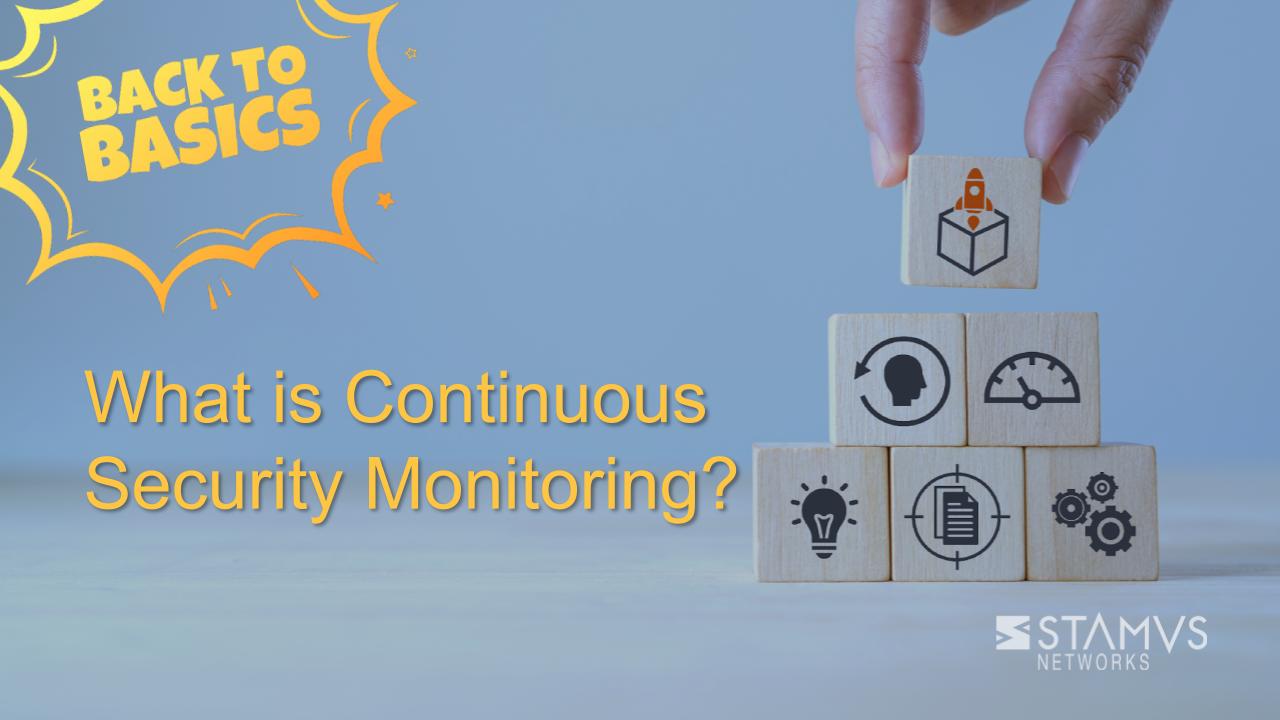Continuous security monitoring (CSM) is a term that frequently comes up when discussing network detection and response (NDR). This is because the two terms are often intertwined, with NDR providing organizations with a strong CSM base to build a cybersecurity strategy. This blog will cover the topic of continuous security monitoring, explaining what it is, its goals and benefits, and providing an example of how NDR fulfills the mission of CSM.
What is continuous security monitoring?
Continuous security monitoring (CSM) is the practice of using a tool or system that consistently checks your organization’s systems for security vulnerabilities and monitors your security controls to ensure that your systems and data stay protected.
Continuous security monitoring tools collect data from your systems, like logs recording user activity, application usage, and network traffic. These tools then analyze the data for anomalies, threats, or other potential vulnerabilities. Continuous security monitoring is a proactive approach to monitoring cyber risks. Organizations practicing CSM are not just waiting for a breach to happen and then responding, but rather attempting to foresee potential threats and address them preemptively.
There are three main types of continuous security monitoring:
- Application Monitoring: the process of monitoring the software components of a system, such as the application code, the application server, and the database.
- Infrastructure Monitoring: the process of monitoring the physical components of a system, such as servers, storage, and networking equipment.
- Network Monitoring: the process of monitoring a system's network traffic, including the router, switches, and other networking equipment.
Choosing the correct type of continuous security monitoring tool for your organization will depend on the unique needs of your organization and the type of infrastructure you rely on.
What is the goal of continuous monitoring?
The goal of continuous monitoring tools is to achieve proactive threat detection and improve your organization’s overall cybersecurity posture. Here are some of the key objectives of CSM:
- Early Threat Detection: By constantly monitoring systems and analyzing activity, CSM aims to identify suspicious behavior or potential vulnerabilities before they can be exploited in a cyberattack. This allows for a quicker response and minimizes potential damage.
- Reduced Risk: By continuously pinpointing weaknesses, continuous monitoring tools help prioritize and address security risks effectively. This proactive approach strengthens your defenses and makes it harder for attackers to gain a foothold.
- Faster Incident Response: When a security incident does occur, CSM can detect it quickly and send alerts for investigation. This allows your security team to react swiftly, potentially containing the breach and mitigating the impact.
- Improved Compliance: Many regulations require organizations to continuously monitor their security posture. Continuous monitoring tools help ensure compliance with these regulations by providing ongoing data and insights into your security effectiveness.
- Enhanced Visibility: CSM provides a clear and comprehensive view of your security landscape. This allows you to understand your overall risk profile and make informed decisions about security investments and strategies.
What are the benefits of continuous monitoring?
While the goals and benefits are often intertwined, some advantages go beyond the core objectives of threat detection and improved security posture. Some benefits of continuous monitoring include:
- Cost Reduction: Proactive identification of vulnerabilities through CSM can prevent costly security incidents. Early detection allows you to address issues before they require expensive remediation efforts, data recovery, or potential fines for non-compliance.
- Improved Decision Making: The continuous data and insights from CSM can be used for broader security planning and budgeting. By understanding your risk profile and the effectiveness of existing controls, you can make informed decisions about resource allocation and prioritize investments in the most critical areas.
- Enhanced Customer Confidence: Continuous monitoring demonstrates a commitment to data security. By proactively managing risks, you can build trust with customers and partners who rely on you to protect their information.
- Competitive Advantage: In today's data-driven world, strong cybersecurity is a differentiator. Implementing CSM showcases your commitment to data security and can be a selling point for attracting and retaining customers.
- Operational Efficiency: Beyond just security benefits, CSM can identify inefficiencies in your systems and user behavior. By analyzing network traffic and user activity, you might uncover opportunities to streamline operations and improve overall system performance.
What is an example of continuous monitoring?
One example of a continuous security monitoring tool is network detection and response (NDR). NDR is a solution that monitors and analyzes network traffic for signs of malicious activity or security threats. Using advanced detection methods, automated incident response, and threat hunting, NDR enables organizations to proactively detect and respond to potential threats to reduce the risk of data breaches or unauthorized access.
NDR falls under the category of a CSM tool because it is constantly monitoring network data and analyzing that data to proactively identify both known and unknown threats. In addition to proactive threat detection capabilities, NDR systems include other features to assist in incident response and forensics. If your organization is looking for network-based continuous security monitoring, network detection and response could very well be the solution you need.
Continuous Security Monitoring with Stamus Security Platform
If your organization needs a solution for network-based continuous security monitoring, look no further than the Stamus Security Platform (SSP).
SSP is the world’s most advanced Suricata-based network detection and response (NDR) system. We combine the very best of machine learning, signature-based, IoC matching, and algorithmic threat detection into a single platform that identifies both known and unknown threats lurking on your network. To learn more about the Stamus Security Platform, view the following resources:
- Stamus Security Platform Data Sheet
- Real World Success Stories: In the Trenches with NDR
- Stamus Security Platform Overview
To be notified of new blog posts and other news, make sure to subscribe to the Stamus Networks blog and the Stamus Spotlight Monthly Newsletter, follow us on Twitter, LinkedIn, and Facebook, or join our Discord.






